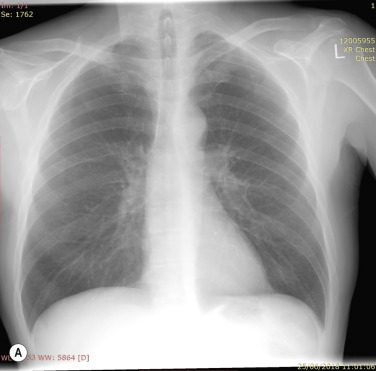Physical Address
304 North Cardinal St.
Dorchester Center, MA 02124
Chest radiography and computed tomography (CT) remain the stalwarts of thoracic imaging. The basic technique of chest radiography has remained largely unchanged since its inception, but continuing developments in image receptor technology have resulted in techniques which are simultaneously efficient and radiation dose-optimised. Radiographs are now mainly produced in digital format, thus facilitating their incorporation into picture archiving and communications systems (PACS). Evolving CT technology has meant that multidetector row CT (MDCT) systems have largely replaced single-detector CT. Newer dual-energy CT (DECT) systems may provide new applications, and these continue to be validated. The latest generation of iterative reconstruction techniques can be manipulated to achieve minimal image noise and lower radiation doses. MDCT protocols integrating these various aspects of novel technology are being continuously refined to strike a balance between obtaining diagnostically adequate information and dose minimisation. Ultrasound and magnetic resonance imaging (MRI) are increasingly being applied in the investigation of specific thoracic diseases. Positron emission tomography (PET) fused with CT (PET–CT) now has an established role in the investigation of neoplastic disease, enabling the simultaneous assessment of metabolic function, anatomical location, and unsuspected extrathoracic metastatic disease.
Chest radiography remains the commonest diagnostic radiographic procedure. Chest radiographs were traditionally acquired with conventional film-screen radiography systems that provide, at low cost, good image quality and high spatial resolution. However, film-screen radiography is limited by a relatively narrow exposure range and consequent high retake rate, as well as inflexibility in image display and manipulation. The exponential advances in computational power, storage capacity and detector technology have led to the replacement of film-screen radiography by PACS and digital imaging systems in most modern imaging departments.
Chest radiography remains the mainstay of thoracic imaging
Novel techniques such as digital tomosynthesis, while useful, are still expensive and limited in availability
Early digital imaging systems introduced over 30 years ago—generally termed ‘computed radiography’ (CR)—used a photostimulable phosphor image receptor plate, and continue to be used in some departments because of their compatibility with conventional radiography equipment. However, CR systems have largely been superseded by direct radiography (DR) systems ( Table 1.1 ). DR systems employ either direct or indirect methods for converting x-ray photons into electrical charges, thereby generating an electrical signal that can be read directly. Direct conversion may be achieved by photoconductors within flat-panel detectors (FPDs) (most commonly amorphous selenium), or using a selenium drum. Indirect conversion involves the use of a scintillator associated with either a charge-coupled device (CCD) or FPD. Scintillators most commonly use thallium-doped caesium iodide-based or, more recently, gadolinium-based compounds. Both CR and DR systems offer many advantages over conventional film-screen radiography, including wider latitude (hence reducing error and repeat examination rates), reusable detectors, almost seamless integration with PACS, and (definitely in the case of DR) superior image quality.
| Computed Radiography | Direct Radiography | ||
|---|---|---|---|
| X-Ray Conversion Method | Indirect conversion | Indirect conversion | Direct conversion |
| Devices | Removable image plates using storage phosphors (analogous to conventional film cassettes) | Scintillator-thin-film transistor array | Selenium drum |
| Scintillator-charge-coupled device | Photoconductor flat-panel detector | ||
| Image Readout | Separate readout process: detector layer must be analysed by laser (point scan or line-scan); resulting output is converted into electrical signal | Direct readout process: x-rays are converted immediately into electrical signal and read | |
Frontal and lateral projections of the chest are adequate for most purposes. Other radiographic views (e.g. lordotic, expiratory, or portable lateral shoot-through radiographs) are now usually performed only when CT is not readily available. The lateral decubitus view, taken as a frontal projection with a horizontal beam and the patient lying on his or her side, is still sometimes used to identify an effusion that is not visible on an erect chest radiograph to demonstrate the movement of fluid in the pleural space or to localise or confirm an equivocal opacity seen on a frontal projection.
CR systems remain the most widely used portable radiography system. They overcome some of the limitations of portable chest radiography ( Box 1.1 ) by controlling optical density and contrast, but are unable to overcome the problem of scatter inherent to all portable systems.
Scattered radiation
Inability of the radiograph to capture all relevant information
Significant underexposure leads to unacceptable image noise and low contrast resolution.
Shorter focus–detector distance results in undesirable, and sometimes misleading, magnification of structures
High kilovoltage techniques cannot be used because portable machines are unable to deliver a sufficiently high kilovoltage, and as the maximum current is limited, long exposure times are needed, increasing movement artefact
An increasing array of portable DR detectors is now being made available, including FPDs, those that can be integrated into existing CR cassettes for flexible positioning, and those with wireless transmission capabilities to allow immediate transfer to PACS, which may substantially improve technologists’ workflow. Such developments are likely to encourage the uptake of portable DR systems in the near future, but at present they still remain relatively costly.
The techniques of digital tomosynthesis, dual-energy subtraction radiography and temporal subtraction radiography, although still confined mainly to research studies, have potential clinical application, chiefly for nodule detection. The decreasing cost of these systems—in particular, of dual-energy subtraction radiography—has enabled their use as a routine chest radiographic technique in some centres.
Dual-energy subtraction radiography is essentially a bone suppression technique that takes advantage of the differential attenuation of x-ray photons of high atomic number materials (such as calcium and iodine) at different photon energies. Such differential attenuation causes the contrast from calcium and bone in a high kVp image to be reduced. As such, subtraction of the low-energy from the high-energy image allows subtraction of obscuring bony structures, potentially increasing pulmonary nodule conspicuity ( Fig. 1.1 ).

Become a Clinical Tree membership for Full access and enjoy Unlimited articles
If you are a member. Log in here